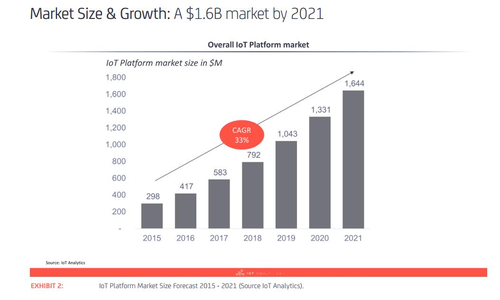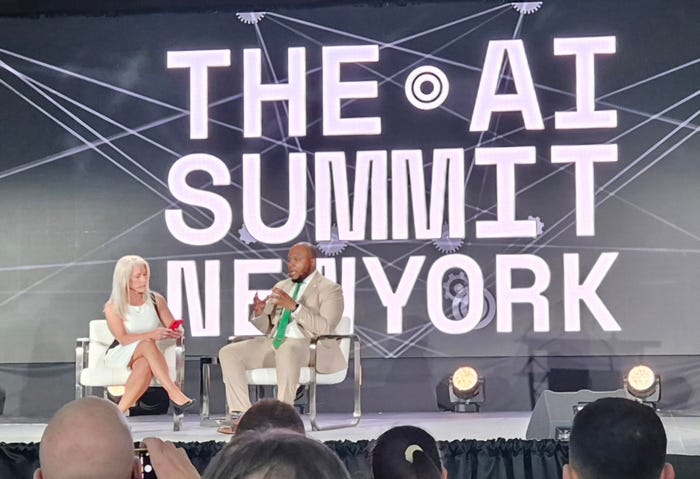Where is the Internet of Things Headed in 2017?
Taking a look at some of the trends that are anticipated to both boost and hamper IoT in its efforts to make 'things' work better.
June 7, 2017

By Arup Barat
The internet of things has grown to a point where the entire world has become familiar with both its good and bad elements.
In 2017, we are expecting the industry to mature as we see the benefits of more refined IoT solutions.
In this article, we take a look at some of the trends that we anticipate will both boost and hamper IoT in their efforts to make things work better.
Security concerns will remain in the spotlight
Security has been at the forefront of IoT conversations and we don’t see that changing.
Governments, manufacturers and consumers around the world need to step up efforts to improve security in the face of recent high profile DDoS attacks. Between government regulations and best practices from industry groups, efforts are necessary to hold manufacturers and developers responsible for the impact their products have.
A couple likely options include requiring security rating labeling on consumer products or developing a common security framework and approach to assess cybersecurity in IoT systems. Despite improvements that are already in place and those that will come in 2017, we can surely expect several more high-profile attacks to happen in the coming year.
Massive growth is on the horizon
IoT solutions provide the edge needed for better insight into operations, as industries are pressed to generate more productivity from less.
Between early adopters and new startups, competition within IoT will push companies across numerous industries to adopt IoT technology. According to Gartner and IDC, there’s an estimated 6.4 billion and 9 billion devices respectively in the world today, not counting phones, tablets and computers as IoT devices.
We expect that installed IoT devices will reach between 9 and 15 billion in 2017. However, with this massive level of growth comes an even greater need to address and resolve security issues.
IoT platforms emerge in the business software landscape
More and more industries are looking to IoT-based solutions, so we expect there to be an increasing demand for IoT platforms that can be readily adapted to multiple industry-specific problems.
Though companies have industry-specific expertise, they are rarely equipped to navigate IoT security, connectivity and hardware considerations. An effective IoT platform partner would reduce both cost and risk significantly for companies. Market analyst IoT Analytics expects IoT platforms will grow at a 33% CAGR through 2021, reflected in their platform report.

Closed solutions will be edged out by open, interoperable solutions
The true value of IoT solutions are largely based on how they will be able to work with other solutions in the future, and both consumers and enterprises are starting to understand that.
Locking into one ecosystem limits flexibility to use legacy devices or select any new device with higher prices because users are required to buy within the same ecosystem. For that reason, the value of interoperability is pegged at $4 trillion, according to McKinsey.
Rather than one killer platform, the true value of IoT will be delivered by many systems that are interoperating in order to meet the needs of various stakeholders.
Less consumer and more enterprise IoT solutions
While there will no doubt be some slick new consumer products like those shown off at CES this year, 2017 will be the year of monetization and implementation of real, large-scale IoT solutions for business.
Most solutions to date have been siloed and are one-offs, like tracking a tractor but not linking that with the rest of a farm supply chain, or monitoring manufacturing equipment preventatively rather than connecting the machines together to optimize the utilization of each asset.
These larger, more integrated solutions are where real value is for enterprise and are poised for a breakout due to both technology advances and market readiness.
Provisioning will get serious attention
A lesser discussed part of implementing an IoT solution is how the devices get connected.
In some enterprise systems, there are hundreds or thousands or millions of devices that need to be connected. Batch and mass provisioning that is secure and can be done at scale is a requirement for realistically deploying these systems.
Rather than plugging each sensor into a computer to authenticate and provision it, new processes that allow specific devices to be ready straight from the factory will become common in 2017.
IoT certifications will become a point of differentiation for manufacturers
Industry organizations and large vendors will offer certifications to exert more influence on how they believe the market should evolve and focus.
Some will become industry standards and serve as a requirement, or at very least a differentiator for device manufacturers. An IoT-specific certification will be similar UL and CE stamps, which are common on many devices and electronics now.
As the IoT progresses, these trends reflect the natural process of maturing that are critical for industry-wide success on a larger scale. Whether we see these trends start playing out within the next few weeks or the next few months, we’re confident in the value of IoT and its implementation going forward.
This year will be a defining one along IoT’s journey, and we’re looking forward to the surprises and trends that will evolve along the way.
You May Also Like






